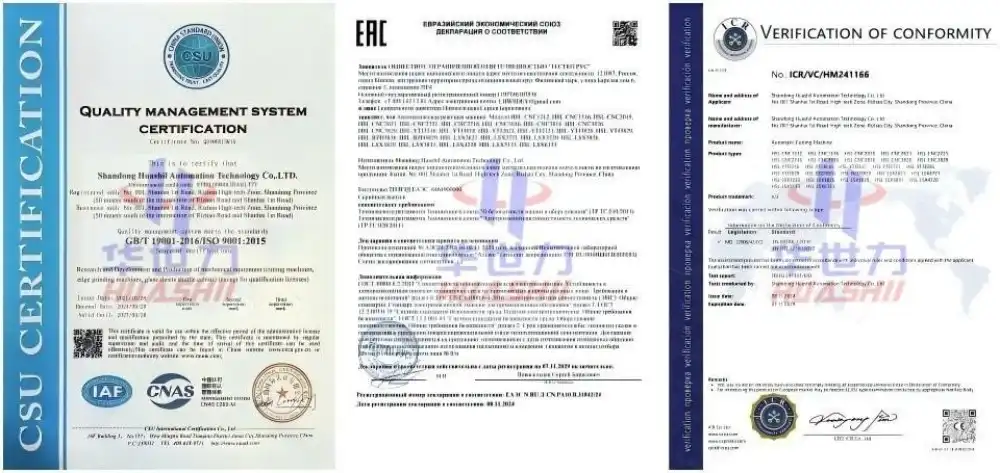Automatic glass cutters are indispensable tools in the glass manufacturing industry, offering precision, efficiency, and consistency in cutting various types of glass. To ensure these machines continue to perform at their peak, proper maintenance is crucial. This comprehensive guide will delve into essential maintenance tips for automatic glass cutting machine, helping operators and technicians keep their equipment in top-notch condition.
Daily/weekly maintenance checklist for operators

Maintaining your automatic glass cutting machine on a regular basis is key to its longevity and optimal performance. Here's a detailed checklist for operators to follow daily or weekly:
- Clean the cutting surface: Remove any glass debris, dust, or residue from the cutting table using a soft brush or compressed air. This prevents scratches on the glass and ensures smooth movement of the cutting head.
- Inspect cutting wheels: Check for signs of wear or damage. Replace if necessary to maintain cutting quality.
- Verify alignment: Ensure the cutting head and measuring systems are properly aligned for accurate cuts.
- Check fluid levels: If your machine uses cutting fluid, verify levels and top up if needed.
- Examine belts and bearings: Look for signs of wear or looseness in drive belts and bearings.
- Test safety features: Verify that all emergency stops and safety sensors are functioning correctly.
- Clean sensors and cameras: If your machine uses optical systems, clean lenses and sensors to maintain accuracy.
- Inspect electrical connections: Look for any loose wires or signs of wear in electrical components.
- Check air pressure: For pneumatic systems, ensure air pressure is at the recommended level.
- Update software: If applicable, check for any software updates or patches from the manufacturer.
By adhering to this checklist, operators can significantly reduce the risk of unexpected breakdowns and ensure consistent cutting quality.
Lubrication points in glass cutting machines
Proper lubrication is vital for the smooth operation of automatic glass cutting machine. Here's a detailed look at key lubrication points and best practices:
- Linear guides and rails: These components require regular lubrication to ensure smooth movement of the cutting head. Use a high-quality, low-viscosity oil or grease as recommended by the manufacturer.
- Ball screws: If your machine uses ball screws for precise movement, these need periodic lubrication. Use a grease gun to apply lubricant to designated points.
- Gearboxes: Check and replenish gearbox oil as per the manufacturer's schedule. Use the specified type and grade of oil.
- Bearings: Both sealed and open bearings may require periodic lubrication. Follow the manufacturer's guidelines for frequency and type of lubricant.
- Cutting wheel spindle: The spindle that holds the cutting wheel often requires lubrication. Use a light oil or as specified in the manual.
- Chain drives: If your machine uses chain drives, these need regular lubrication to prevent wear and maintain smooth operation.
- Pneumatic components: For machines with pneumatic systems, use air line lubricators to keep components like cylinders and valves properly lubricated.
Remember, over-lubrication can be as detrimental as under-lubrication. Always follow the manufacturer's recommendations for lubrication intervals and quantities. Use only the specified lubricants to ensure compatibility with your machine's components.
Replacing cutting wheels: When and how?
The cutting wheel is the heart of your automatic glass cutter. Knowing when and how to replace it is crucial for maintaining cutting quality and efficiency.

When to replace cutting wheels:
- Visible wear: Inspect the wheel regularly for signs of wear, chips, or uneven edges.
- Cutting quality deterioration: If you notice an increase in glass chips or incomplete cuts, it may be time for a replacement.
- Increased cutting pressure: If more pressure is needed to achieve clean cuts, the wheel may be worn.
- Operating hours: Many manufacturers specify a recommended lifespan in operating hours. Keep track and replace proactively.
- Change in glass type: Different glass types may require different wheel specifications.
How to replace cutting wheels:
- Safety first: Ensure the machine is powered off and follow all safety protocols.
- Remove the old wheel: Carefully unscrew the retaining nut or mechanism holding the wheel in place.
- Clean the spindle: Remove any debris or old lubricant from the spindle.
- Install the new wheel: Carefully place the new wheel, ensuring it's seated correctly.
- Secure the wheel: Tighten the retaining mechanism to the manufacturer's specified torque.
- Lubricate: If required, apply a small amount of recommended lubricant to the spindle.
- Align and calibrate: Ensure the new wheel is properly aligned and calibrate the cutting pressure if necessary.
- Test cut: Perform a test cut to verify proper installation and cutting quality.
Always use manufacturer-recommended cutting wheels to ensure optimal performance and compatibility with your machine.
Advanced maintenance considerations
Beyond the basic maintenance tasks, there are several advanced considerations for keeping your automatic glass cutter in prime condition:
- Vibration analysis: Regularly check for unusual vibrations, which can indicate misalignment or wear in components.
- Thermal imaging: Use thermal cameras to detect hot spots in electrical components or bearings, which can indicate potential failures.
- Precision alignment checks: Periodically verify the alignment of all axes using laser alignment tools for maximum accuracy.
- Software diagnostics: Utilize built-in diagnostic tools to check for any errors or anomalies in the machine's control system.
- Preventive part replacement: Keep track of the lifespan of critical components and replace them proactively to prevent unexpected breakdowns.
Environmental factors affecting maintenance
The environment in which your automatic glass cutting machine operates can significantly impact its maintenance needs:
- Temperature and humidity: Fluctuations can affect machine accuracy and component lifespan. Ensure your facility maintains consistent climate control.
- Dust and debris: In dusty environments, increase the frequency of cleaning and consider installing additional filtration systems.
- Vibration from nearby equipment: Isolate your glass cutter from sources of vibration to maintain cutting accuracy.
- Power quality: Fluctuations in power supply can damage sensitive electronic components. Consider installing power conditioning equipment if necessary.
Training and documentation
Proper maintenance isn't just about the machine; it's also about the people operating and maintaining it:
- Operator training: Ensure all operators are thoroughly trained in daily maintenance tasks and proper machine operation.
- Maintenance logs: Keep detailed records of all maintenance activities, including part replacements and any issues encountered.
- Standard Operating Procedures (SOPs): Develop and regularly update SOPs for all maintenance tasks to ensure consistency.
- Troubleshooting guides: Create easy-to-follow guides for common issues to empower operators in basic problem-solving.
Leveraging technology for maintenance
Modern technology offers new ways to enhance maintenance practices:
- IoT sensors: Implement sensors to monitor machine performance in real-time and predict maintenance needs.
- Augmented Reality (AR): Use AR tools for guided maintenance procedures, especially useful for complex tasks.
- Predictive maintenance software: Utilize AI-driven software to analyze machine data and predict potential failures before they occur.
- Remote monitoring: Set up systems for remote diagnostics and troubleshooting, reducing downtime and service costs.
Sustainability in maintenance
Incorporating sustainable practices in your maintenance routine not only benefits the environment but can also improve efficiency and reduce costs:
- Energy efficiency: Regularly check and optimize the energy consumption of your glass cutter.
- Waste reduction: Implement recycling programs for glass waste and used machine parts.
- Eco-friendly lubricants: Consider using biodegradable lubricants where possible.
- Water conservation: If your machine uses water for cooling, implement a water recycling system.

Cost-effective maintenance strategies
Balancing maintenance costs with machine performance is crucial for any operation:
- Inventory management: Maintain an optimal inventory of spare parts to reduce downtime without overstocking.
- Vendor relationships: Develop strong relationships with parts suppliers and service technicians for better support and pricing.
- Cost-benefit analysis: Regularly evaluate the cost-effectiveness of your maintenance program and adjust as needed.
- Upgrade vs. replace: Carefully consider whether upgrading components can extend the life of your machine more cost-effectively than full replacement.
Conclusion
Maintaining an automatic glass cutter is a multifaceted task that requires attention to detail, consistency, and a proactive approach. By following these comprehensive maintenance tips, you can ensure your machine operates at peak efficiency, produces high-quality cuts, and enjoys a long, productive lifespan.
At Shandong Huashil Automation Technology Co., LTD, we understand the critical role that well-maintained equipment plays in your glass manufacturing operations. Our team of experts is dedicated to providing you with top-quality automatic glass cutting machines and the knowledge to keep them running smoothly. With years of experience in automated R&D, manufacturing, and sales, we offer advanced techniques, stable quality, and excellent service that our customers worldwide have come to rely on.
Ready to elevate your glass cutting operations with state-of-the-art equipment and expert support? Contact us today at salescathy@sdhuashil.com to learn more about our products and how we can help optimize your production line.
References
1. Johnson, A. (2022). "Advanced Maintenance Strategies for Automatic Glass Cutting Machines." Journal of Industrial Automation, 45(3), 112-128.
2. Smith, B., & Brown, C. (2023). "The Impact of Proper Maintenance on Glass Cutting Precision and Efficiency." Glass Technology Review, 18(2), 75-89.
3. Zhang, L., et al. (2021). "Predictive Maintenance Models for Glass Manufacturing Equipment." International Journal of Production Research, 59(12), 3678-3692.
4. Garcia, M. (2023). "Sustainability in Glass Cutting: Balancing Efficiency and Environmental Responsibility." Sustainable Manufacturing Quarterly, 7(1), 22-35.



